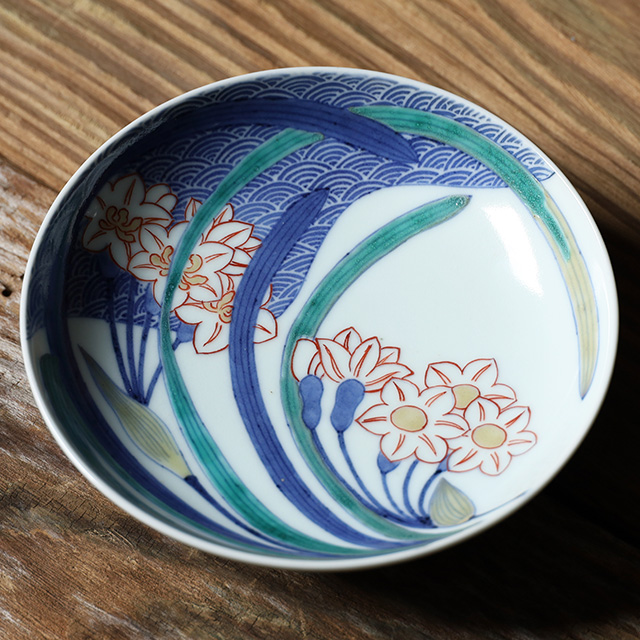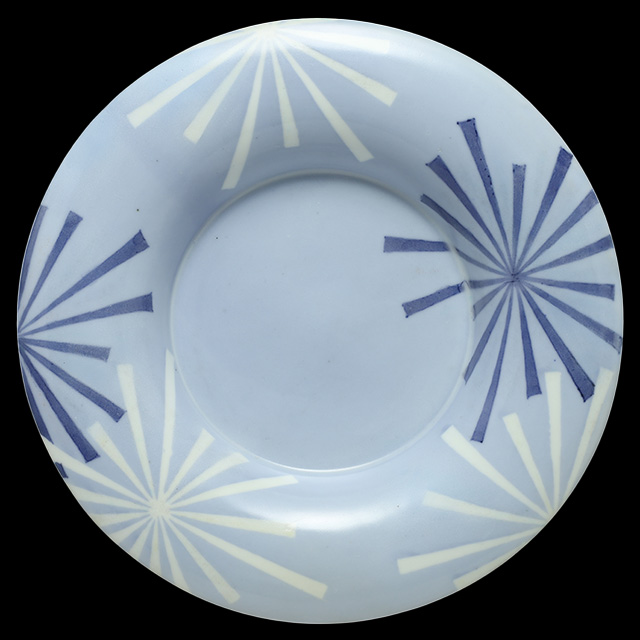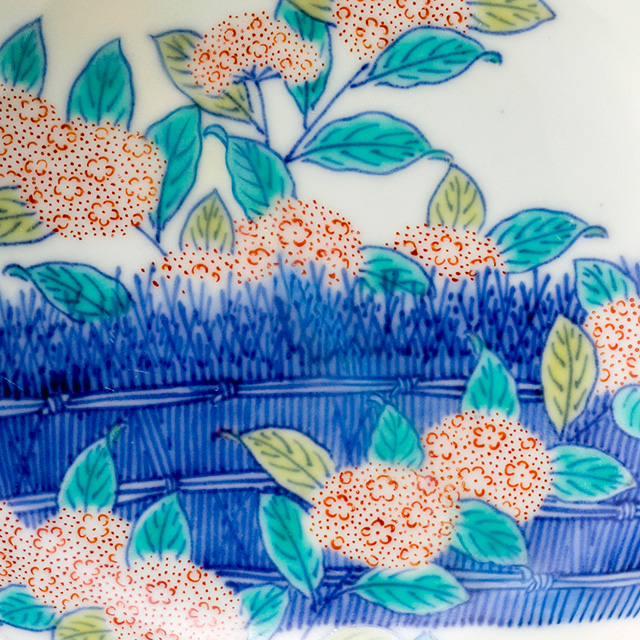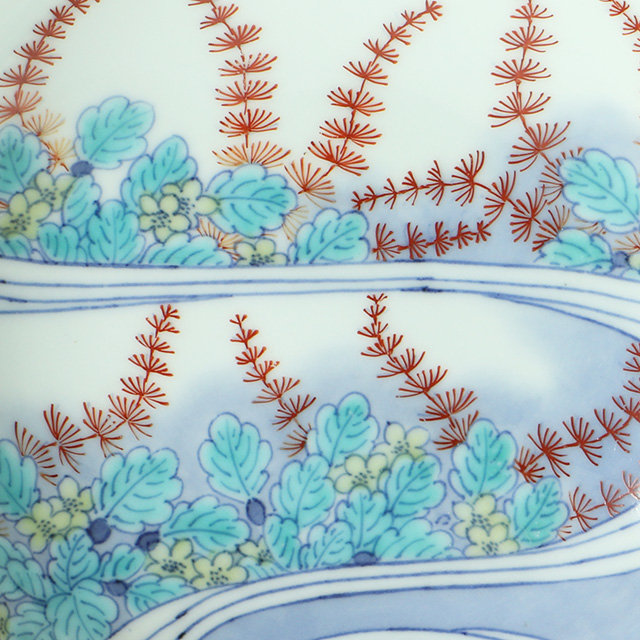Nabeshima Ware
鍋島焼
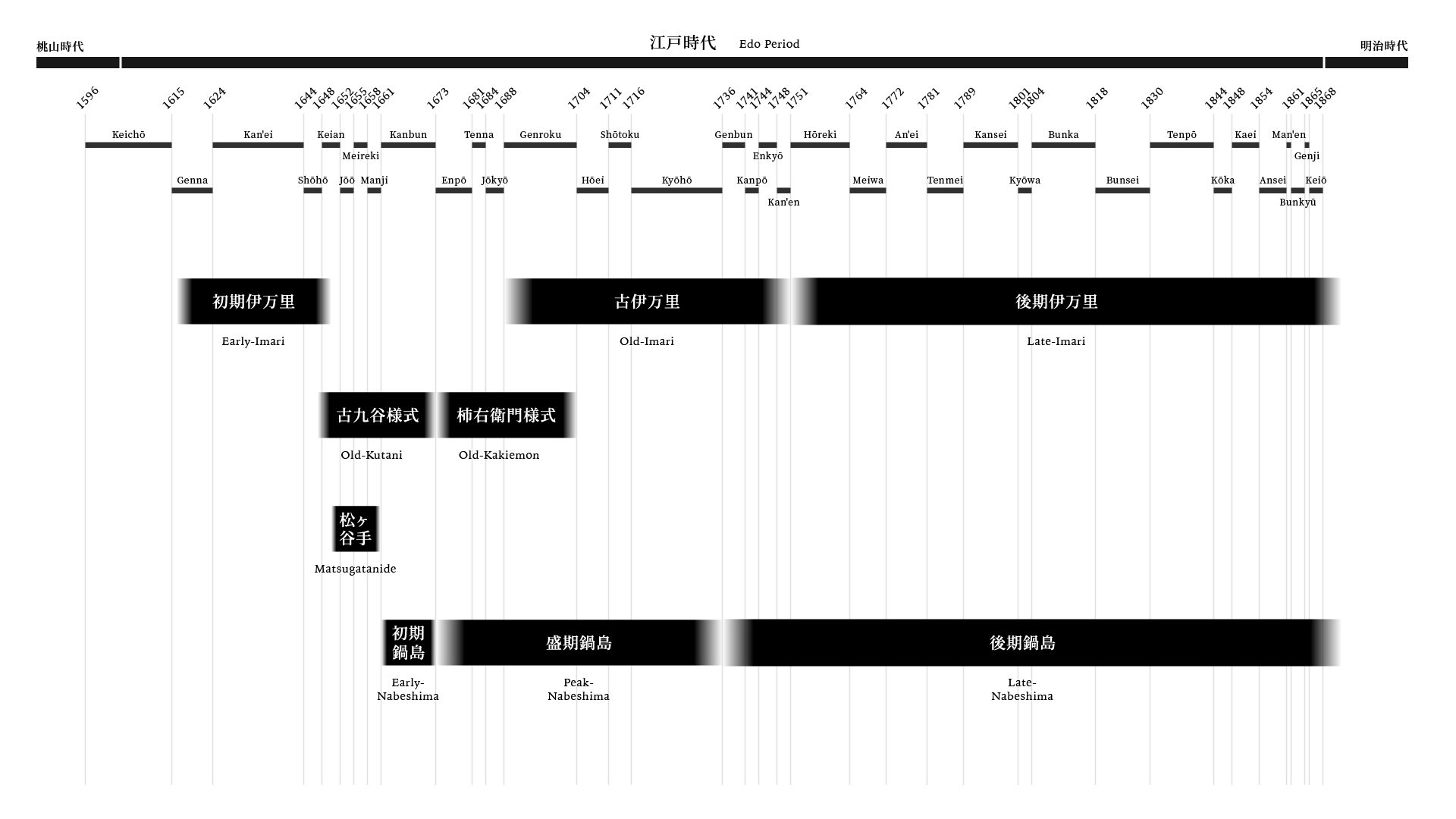
https://tenpyodo.com/en/product1/cat/japanease-en/(Fine Arts ⇒ Japanese Antique)
Nabeshima Ware
Nabeshima ware is a finely crafted and highly dignified porcelain specially commissioned and fired at the Nabeshima domain kilns in Okawachiyama, Matsuura District, under the patronage of the Nabeshima clan of the Saga Domain in Hizen Province. It is the only porcelain in Japan to possess the characteristics of an official kiln, and it stands as a world‑class masterpiece. Its technical refinement surpasses even the Kakiemon style, establishing an unparalleled reputation. The finest examples are often said to rival the imperial wares produced at China’s official kilns, a comparison that is by no means an exaggeration. Created as offerings to the shogunate—serving as proof of loyalty to the central authority of the bakuhan system—and presented to other feudal lords as symbols of amity, Nabeshima ware was never intended for commercial sale. Because production disregarded profitability entirely, these works were not distributed among the general public. The fundamental orientation of the domain kilns did not lie in tea ceramics but in practical vessels, especially dishes. In the Hizen region, ceramic‑producing areas were referred to as “yama,” and within the Nabeshima domain, the kiln dedicated to producing official wares was called the “Odogu-yama.” Selected master potters from various Hizen kilns were summoned to the Nabeshima kiln, where, in an isolated environment and under a strict organizational structure, a distinctive style was established. Records from the late Edo period note that 31 potters were employed, producing 5,031 pieces annually. A checkpoint was installed at the entrance to the kiln site, and passage by unauthorized individuals was strictly prohibited to prevent the leakage of secret techniques. Artisans working there were permitted to bear surnames and swords and were exempted from certain taxes. Production followed a division‑of‑labor system modeled after China’s official kilns, and even a single dish passed through the hands of numerous craftsmen. Offerings to the shogunate were produced with extras to account for breakage, and it is said that they were typically presented in sets of twenty. The early and mature periods saw the culmination of supreme techniques supported by exceptional craftsmanship. While works in underglaze blue and celadon exist, the most representative pieces are the “Iro‑Nabeshima” wares. Their method—drawing outlines in underglaze blue and applying overglaze enamels in red, green, and yellow—is considered to follow the “doucai” technique of the Chenghua era (1465–87) of the Ming dynasty, a level of refinement achievable only because the kiln operated without regard for cost. The designs shed Chinese and Korean influences, embodying instead a uniquely Japanese elegance. Motifs centered on plants of the natural world, along with landscapes, Noh costumes, and patterns drawn from Momoyama and Edo period painting manuals, crystallizing a beauty both graceful and noble. A representative vessel shape is the tall‑footed dish known as “wooden-cup form,” formed on the potter’s wheel. Compared with ordinary Arita folk kilns, the unusually tall foot is thought to have been intended to impart a sense of formality. Around the exterior of the foot, many works feature a distinctive underglaze blue pattern known as “comb-tooth pattern,” a technique permitted exclusively at the Nabeshima domain kilns and strictly forbidden elsewhere. Mature period works employ a meticulous method of shading (dami) within the underglaze blue outlines, but as time progressed, the lines gradually became less precise, eventually declining into simplified single‑line outlines. All products underwent rigorous inspection by multiple examiners, and only those that passed were delivered to the domain. Any defective pieces were completely destroyed. With the abolition of the feudal domains in 1871 (Meiji 4), the Nabeshima domain kilns were closed, bringing their distinguished history to an end.
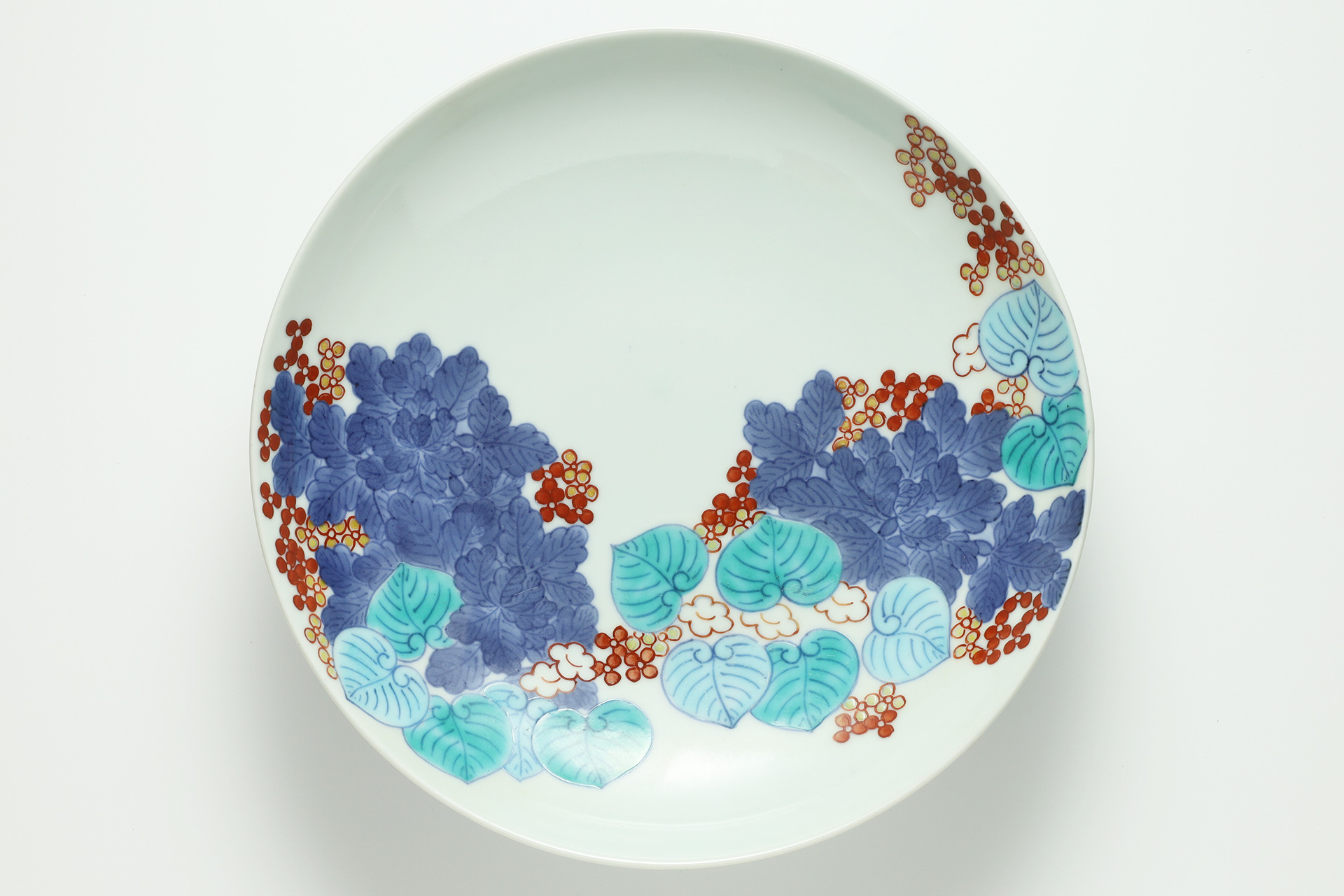

Incipient-Nabeshima of the Iwayagawachi-Domain-Kiln(Matsugatanide)
Katsushige Nabeshima, the first lord of the saga domain in hizen province, was on the anti-tokugawa(western)side in the battle of sekigahara and offered imported chinese porcelain to the shogunate to restore relations. As a result of the civil war between the ming and qing dynasties in 1644, which made it difficult to import chinese porcelain, there was an urgent need to develop unique porcelain suitable for tribute to the shogunate. It is speculated that the iwayagawachi-domain-kiln in arita were ordered to accomplish the task. The third shogun, Iemitsu Tokugawa, personally inspected these prototypes in 1651, and as a result, nabeshima ware is thought to have been offered to the shogunate every year. Irregular-shaped small dishes and cups, classified as “Matsugatanide” can be presumed to be examples of incipient-nabeshima made at the iwayagawachi-domain-kiln. Pottery shards with overglaze enamels base matching the matsugatanide tradition have been excavated from the sarugawa-kiln in iwayagawachi and are considered to be the work of the iwayagawachi-domain-kiln(odougu-yama), which precedes the nabeshima-domain-kiln(okawachiyama). The design on the reverse side and the inside of the kodai supporting the vessel are left blank and unmarked, and the absence of meato(marks left by stacking vessels for firing)distinguishes this pottery from that of arita’s private kilns. The bottom of the kodai was carefully carved out on three sides, and it took masterful and outstanding skills to create such thin and deeply engraved kodai. Subsequently, flat kodai with less noticeable corners gradually became more common, and the corners were further rounded off as time went on. Saggar, which were unglazed and fire resistant containers, were essential for firing porcelain without meato and without distorting the porcelain. At this time, the overglaze enamels method was still in its trial and error phase. Because nabeshima ware was intended to be presented to the shogun, it underwent a transition sensitive to changes in the tokugawa shogunate, which was the absolute power in the japanese feudal system. In 1659, the period of full scale trade with the dutch east india company(VOC)began. Around the 1660s, the prestigious domain kiln was separated from odoguyama in arita and moved to okawachiyama(now imari city), surrounded by steep mountains, where they were better hidden from the public. After this arita-nabeshima period, nabeshima ware was fully established at the nabeshima-domain-kiln in okawachiyama.
Main Features
- They are bisque firing.
- Less distortion.
- There are no inscriptions on the reverse side.
- They are no meato on the inside of the kodai.
- The bottom of the kodai is carved out on three sides to prevent sand from fusing to the bottom.
- Most are irregular-shaped small dishes with a diameter of about 15.0 cm or small, cylindrical cups.
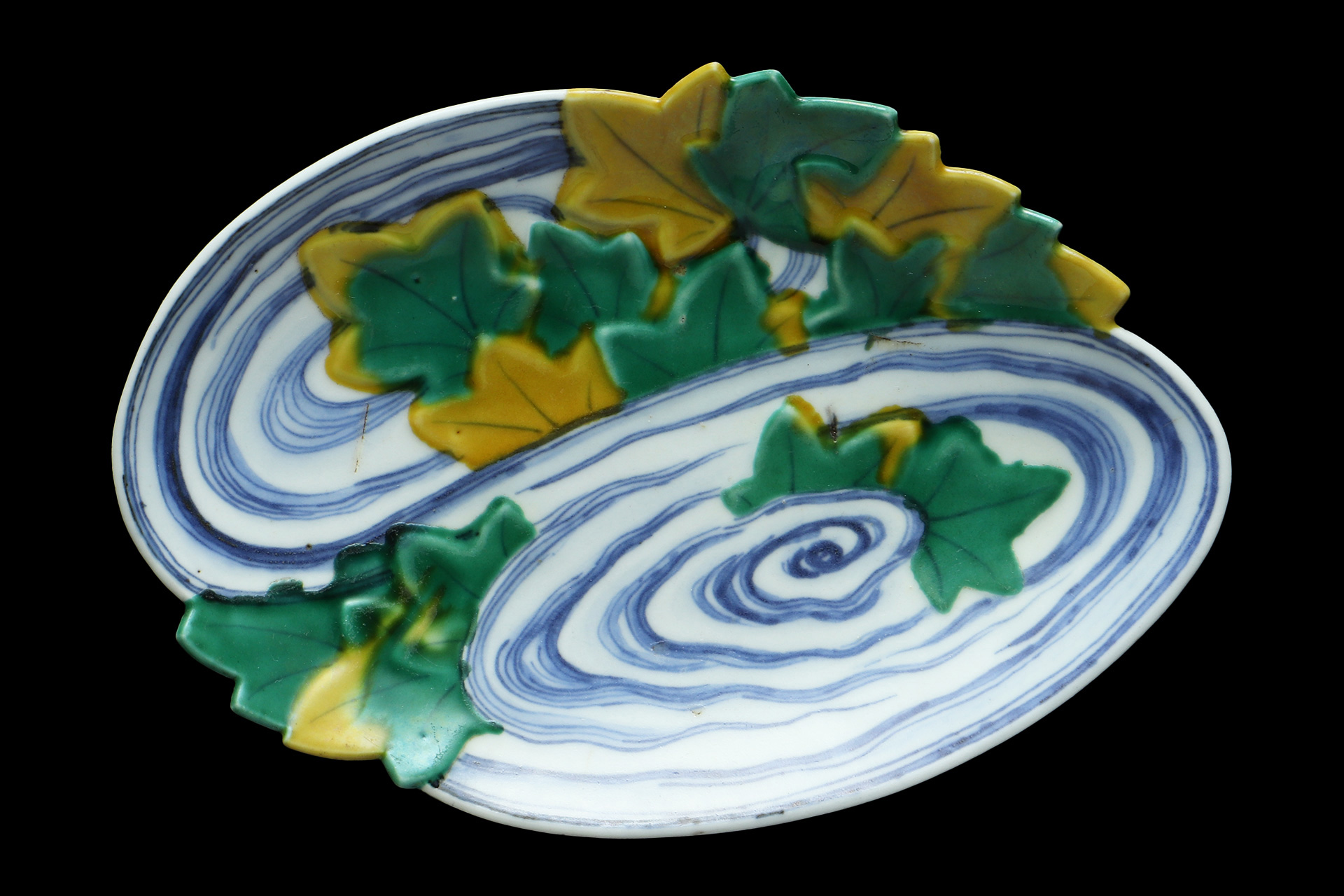
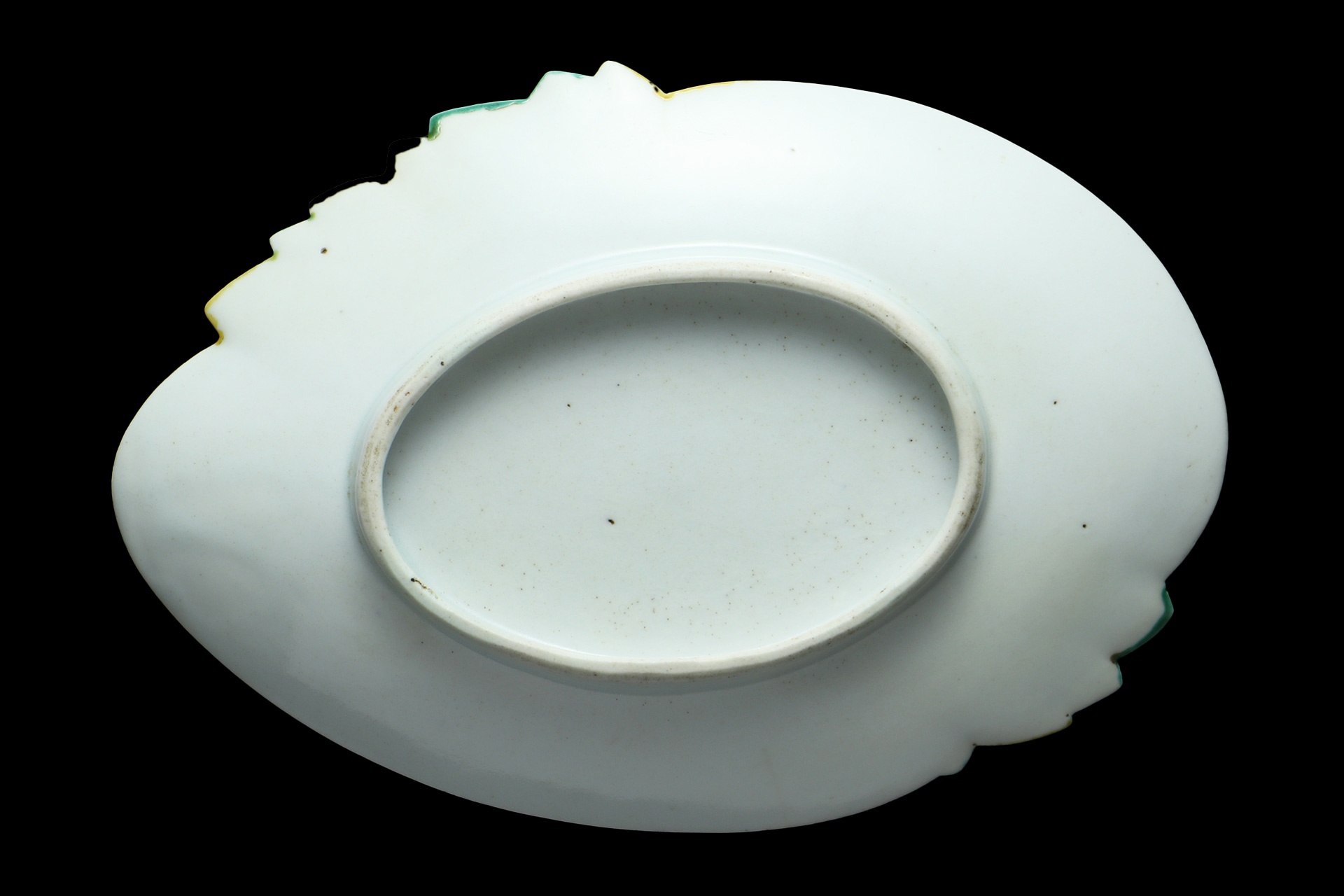
Early-Nabeshima(Old-Nabeshima)
The early-nabeshima(old-nabeshima)was produced in the nabeshima domain kiln in the 1660s. The nipposya-shita kiln(nipposya is a shrine dedicated to Naoshige Nabeshima)was one of the first domain kiln at okawachiyama and produced both products for the general public and exquisite fine porcelain by offering at the same time. Shallow dish with a standardized mokuhai shaped(a high stand supporting the vessel)began to appear at this time. Focusing on small dishes of about 15.0cm and irregular shaped dishes in slightly rich colors, in addition to blue and white porcelain, a technique of outlining with paint and firing at high temperature with a transparent glaze, these works combined overglaze enamels, celadon, cobalt blue glaze and iron glaze techniques. The overglaze enamels technique at this time not only employed blue and white but also underwent much trial and error, such as adding red outlines. The designs on the kodai holding the vessel include yomodasuki design(design with various patterns in a square lattice), hato design(wave design), heart tsunagi design(design with connected heart shapes), kyoshi design(triangular design resembling sawtooth), kaminari tsunagi design(angular spiral design), kensakirenben design (design that looks like the tips of swords lined up), and shippo musubi design. The kushiba design (comb teeth design), which became the mainstream after the peak period, is less common. In the peak period, the standard was often strict, and regulations often bound the work, but at this time, there were many dynamic works with liberal shapes and many small cups.
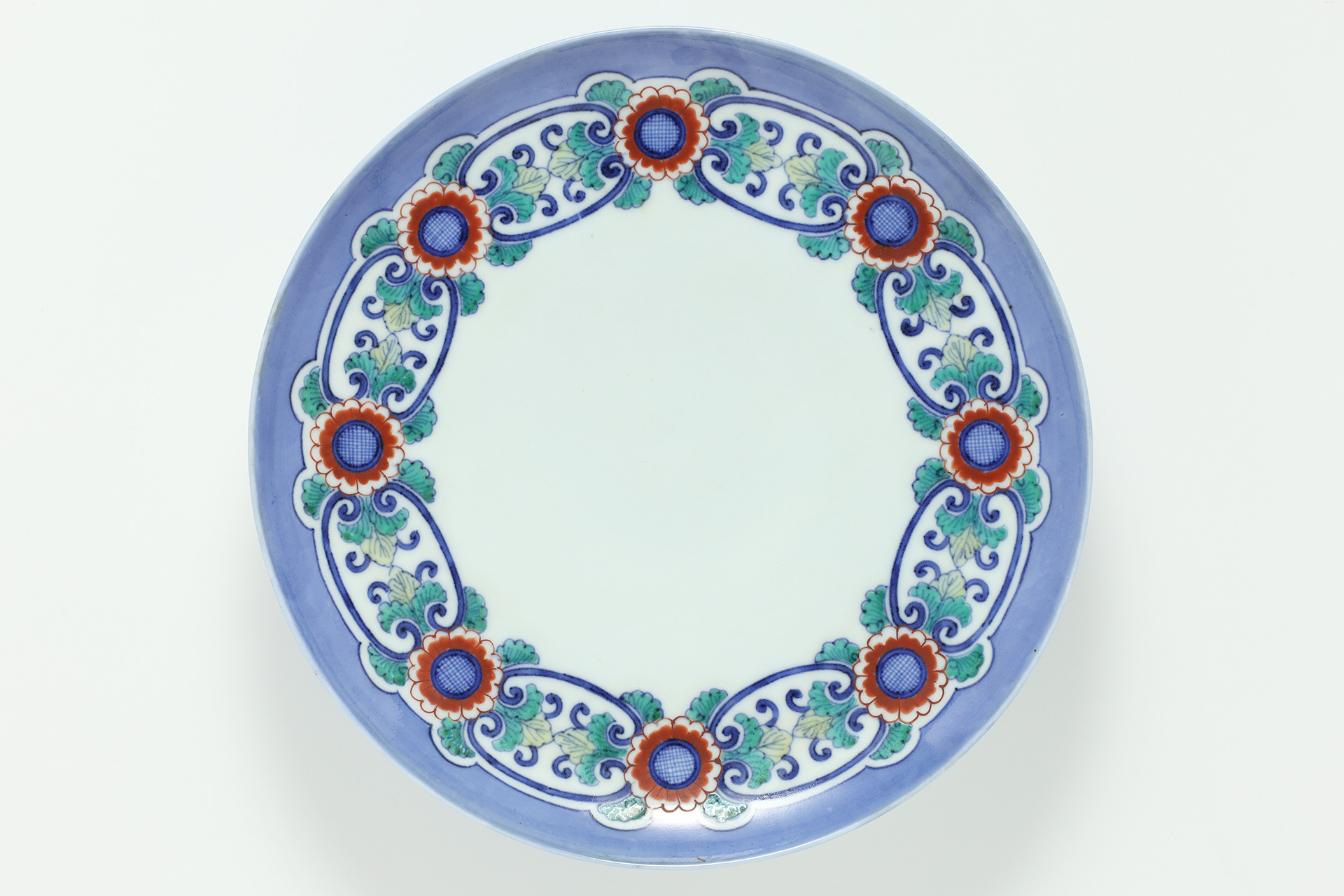
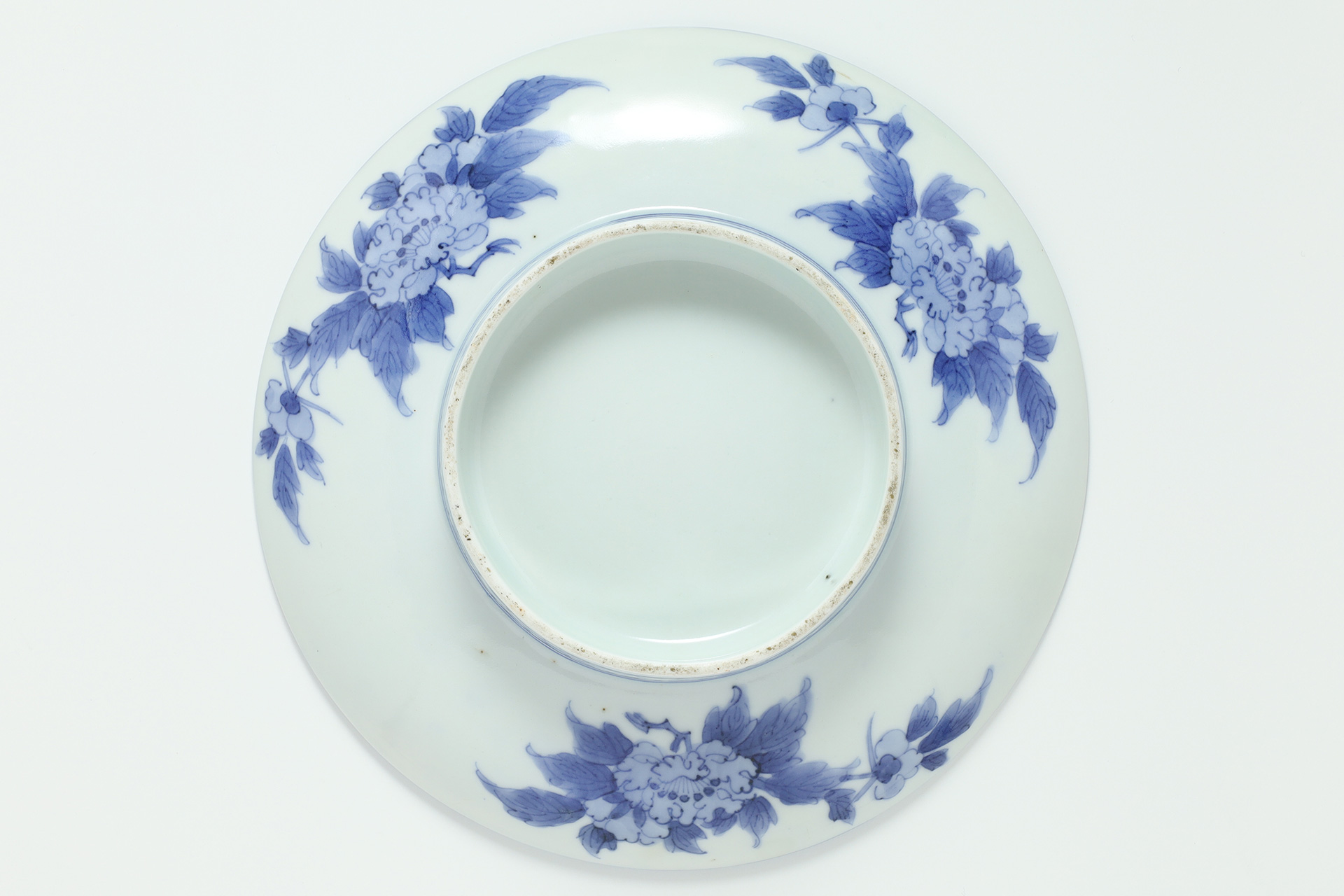
Mature Period Nabeshima
The Mature Period Nabeshima refers to the porcelain produced at the Nabeshima domain kilns between the 1670s and the 1730s. In 1693 (Genroku 6), an official directive issued in the name of the second lord, Nabeshima Mitsushige, to the Arita Sarayama magistrate set forth a series of bold reforms. These included strict control over tribute wares and adherence to delivery deadlines; the creation of innovative porcelain by avoiding reliance on fixed, repetitive designs and by incorporating superior motifs from the private kilns of Wakiyama (Arita folk kilns); the prohibition of craftsmen from Wakiyama entering the domain kilns to prevent leakage of technical knowledge; the destruction of defective pieces within the kiln precincts; and the recruitment of highly skilled artisans from Wakiyama while dismissing those deemed incompetent. These measures triggered a major transformation in style. A close examination of the decorative motifs reveals many precedents in the Arita folk kilns. The comb‑tooth pattern with a fully painted footring can be traced to the Sarugawa kiln of the 1640s–50s, and the technique of bokashi‑dami (shaded overglaze coloring), perfected at the Kakiemon kiln and the Nangawarakamanotsuji kiln, appears in an even more refined form in Mature Period Nabeshima. Painting became increasingly pictorial in style, and techniques such as the introduction of the central negative‑reserve method were executed with remarkable precision. The period thus reached a pinnacle worthy of being called the apex of Japanese porcelain, distinguished by unparalleled technical mastery. Most of the representative iro‑Nabeshima pieces were produced during this era, and many large dishes—technically difficult to fire—were successfully made. The curves of the dishes maintain a beautifully balanced symmetry, while the reverse side typically features the prevailing combination of a comb‑tooth–patterned footring and a shippo‑musubi (linked seven‑treasures) design. In rare cases, gold decoration is also observed. According to records from the Kyoho era (1716–36), a total of eighty‑two items in five categories—large bowls (30.0 cm), large dishes (21.0 cm), medium dishes (15.0 cm), small dishes (9.0 cm), and choko cups—were presented to the shogunal household. The same number was delivered to the succeeding dainagon, and when combined with gifts to 35–41 senior officials of the shogunate, the total is said to have reached approximately 2,000 pieces.

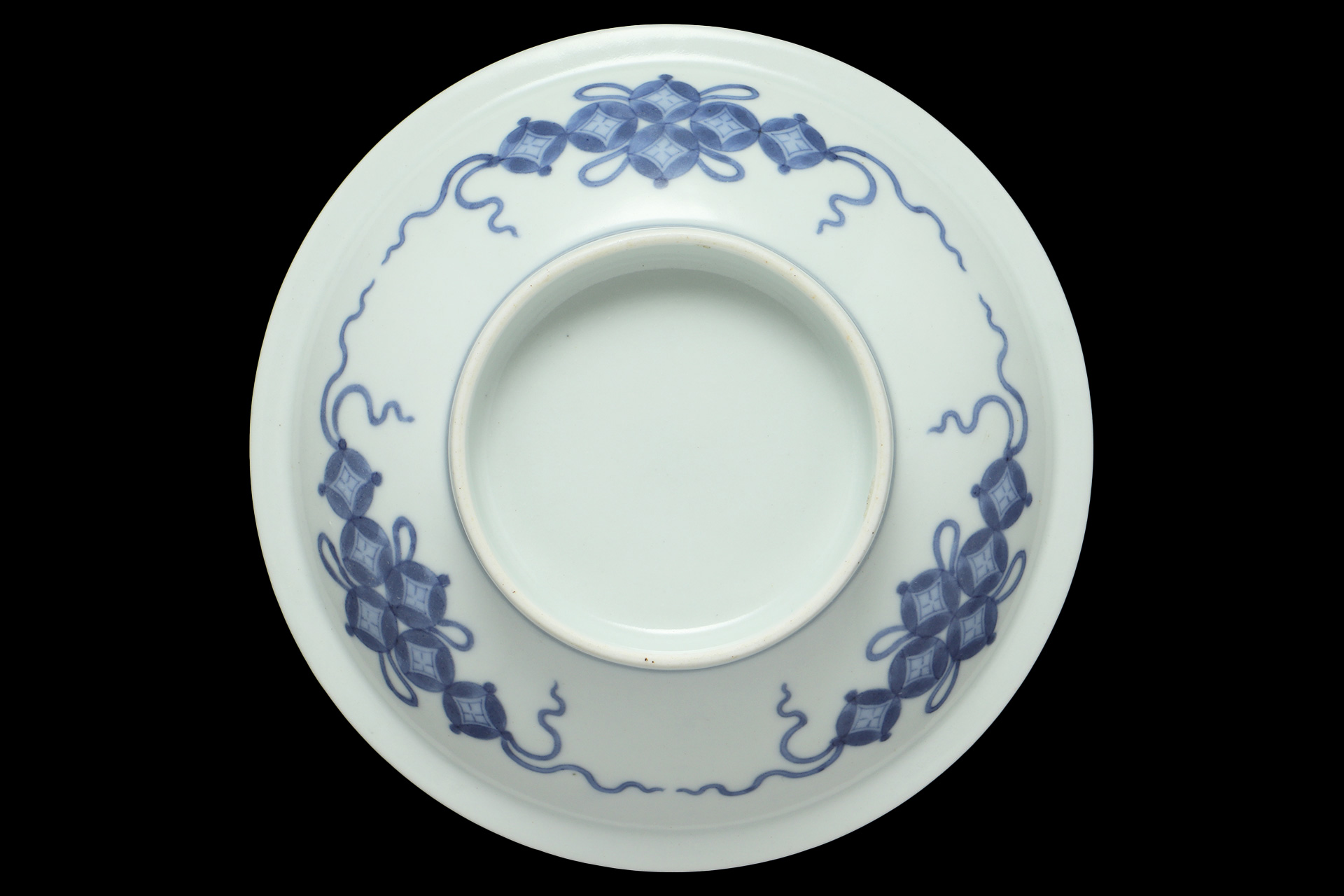
後期鍋島
江戸後期以降の鍋島焼は技術的に精緻さが失われる他、
高台内に紀年在銘や制作者記号を入れた物が現れる等、
制作に当たっての制約にも緩みが生じてきます。
8代将軍・徳川吉宗(1684~1751)は幕府財政の再建を目的として「享保の改革」を行いました。
1722(享保7)年に贅沢品や華美な物を廃す倹約令が出され、
1726(享保11)年に幕府より例年献上陶器に種類の多い色絵具で装飾した物は制限し、
青磁はこれまで通りと命じられました。
こうして最盛期を彩った色数の多い色鍋島は消え、
赤色や二色の色鍋島は例年献上以外で少量のみ焼成されましたが、
染付、次いで青磁が圧倒的な数を占めるようになります。
後期以降の裏文様には牡丹唐草(蟹牡丹)文が圧倒的に増加し、
櫛高台に七宝結文の組み合わせは、
牡丹唐草文の裏文様よりも相対的に粗放な作行の物が多く、
例年献上以外の贈答や藩用品として造られた可能性が強いように考えられます。
寛政年間(1789~1801)頃からは町人層へも広く鍋島焼は流通していたと考えられています。
江戸後期以降の全国諸藩の財政は極度に悪化していたと考えられており、
藩より富豪商人への借銀返済の一端として使用されたと思われる例も確認されています。
鍋島藩から直接的に町人層へ渡っていたとは考え難いのですが、
富豪商人を経て、最終的に経済的優位な状況にあった町人層へも流通したと考えられます。
鍋島藩は幕末に外国船が来航する長崎での防備の経済的負担が大きくなった為、
幕府に願い出る事で初めて、
1857(安政4)年に例年献上を5年間免除されました。
将軍家御好みの意匠・十二通り
各大名家から徳川家へは「月次献上」として毎月様々な品物が納められていました。
鍋島焼は11月の献上品であり、
1770(明和7)年には鉢2枚、大皿20枚、中皿20枚、小皿20枚、
茶碗と皿と猪口の内20個をセットとして5箱分が献上されたという記録が残されています。
20枚1組となる皿類は組食器として同文様で構成されていました。
この月次献上に合わせ、多くの幕府高官、佐賀藩と縁のある諸役人、親戚等へも贈答された為、
相当な点数が造られた事が窺えますが、
現在では散逸して、組食器としての本来の姿を偲ぶことができる例は貴重です。
10代将軍・徳川家治時代の1774(安永3)年に佐賀藩は献上陶器についての指示を受け、
以後の将軍家献上の鍋島スタイルが確立されます。
詳細は「例年献上の陶器五品の中に十二通りの品から二・三品を含めるように」という事でした。
この「将軍家御好みの意匠・十二通り」に該当する作品は、
梅絵大肴鉢、牡丹絵中肴鉢、菊絵大角皿、山水絵中角皿、山水絵長皿、遠山霞絵長皿、
折桜絵長皿、金魚絵船形皿、萩絵丸中皿、葡萄絵菊皿、蔦絵木瓜形皿、松千鳥絵猪口です。
Nabeshima-Celadon
In japan, celadon (Karamono), which came from the continent, had been highly prized since the kamakura period, and the nabeshima ware had put particular emphasis on celadon. It is also known that the clan moved its kiln to okawachi-yama(nabeshima-domain-kiln) because of the availability of high quality celadon ore. The nabeshima clan thus produced some of japan’s finest celadons, which made a clear impression. Outstanding works bear a celadon color reminiscent of kinuta-celadon, the highest quality celadon produced in china. Nabeshima-celdon was designed to match the quality of the chinese kinuta-celdon and jiaotanxia-imperial-kiln celadon. The glaze consisted of natural celadon ore from okawachi-yama nihonyanagi mixed with the ashes from burning the best japanese cypress, which produced the soft, beautiful porcelain surface made during the peak-nabeshima. Although this celadon produced a deep color by applying multiple layers of the glaze, it had to be fired in a kiln each time, which entailed the risk of defects. Because the clan undertook the production of nabeshima ware, meant to be presented to the shogun and other feudal lords, it was possible to take such risks without regard to profit when firing celadon. While most common celadons only feature celadon-glaze, nabeshima-celadon uses the blue-and-white(sometsuke) technique(a technique of painting designs, applying a transparent glaze, and firing at a high temperature) and overglaze enamels. The celadon blue-and-white(sometsuke) for nabeshima using celadon-glaze containing gosu(a blue dye used for porcelain) has celadon-glaze applied at least twice, then gosu, along with another coating of celadon-glaze before firing. In this way, the works undergo a meticulous production process in which they are fired at least three times.
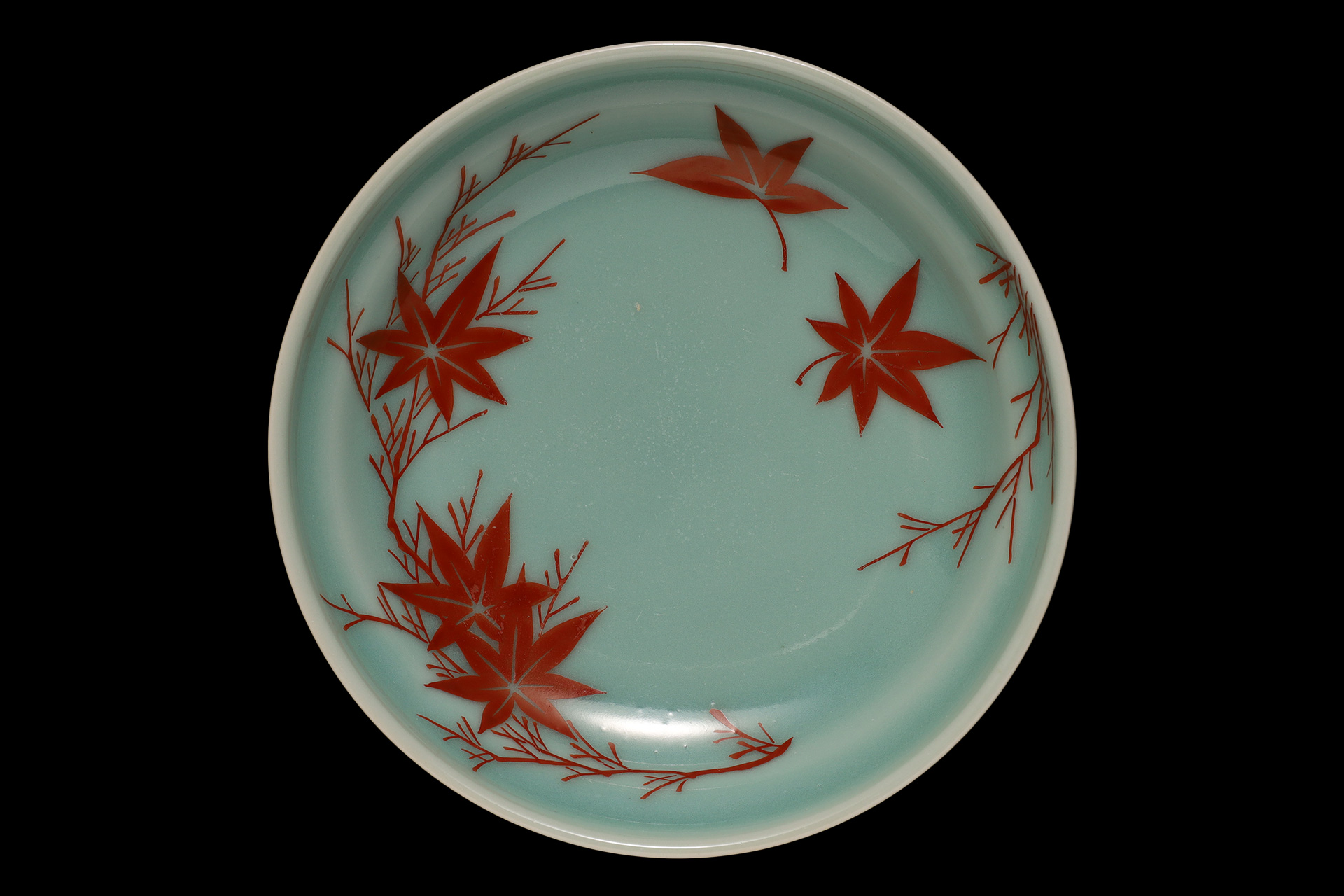
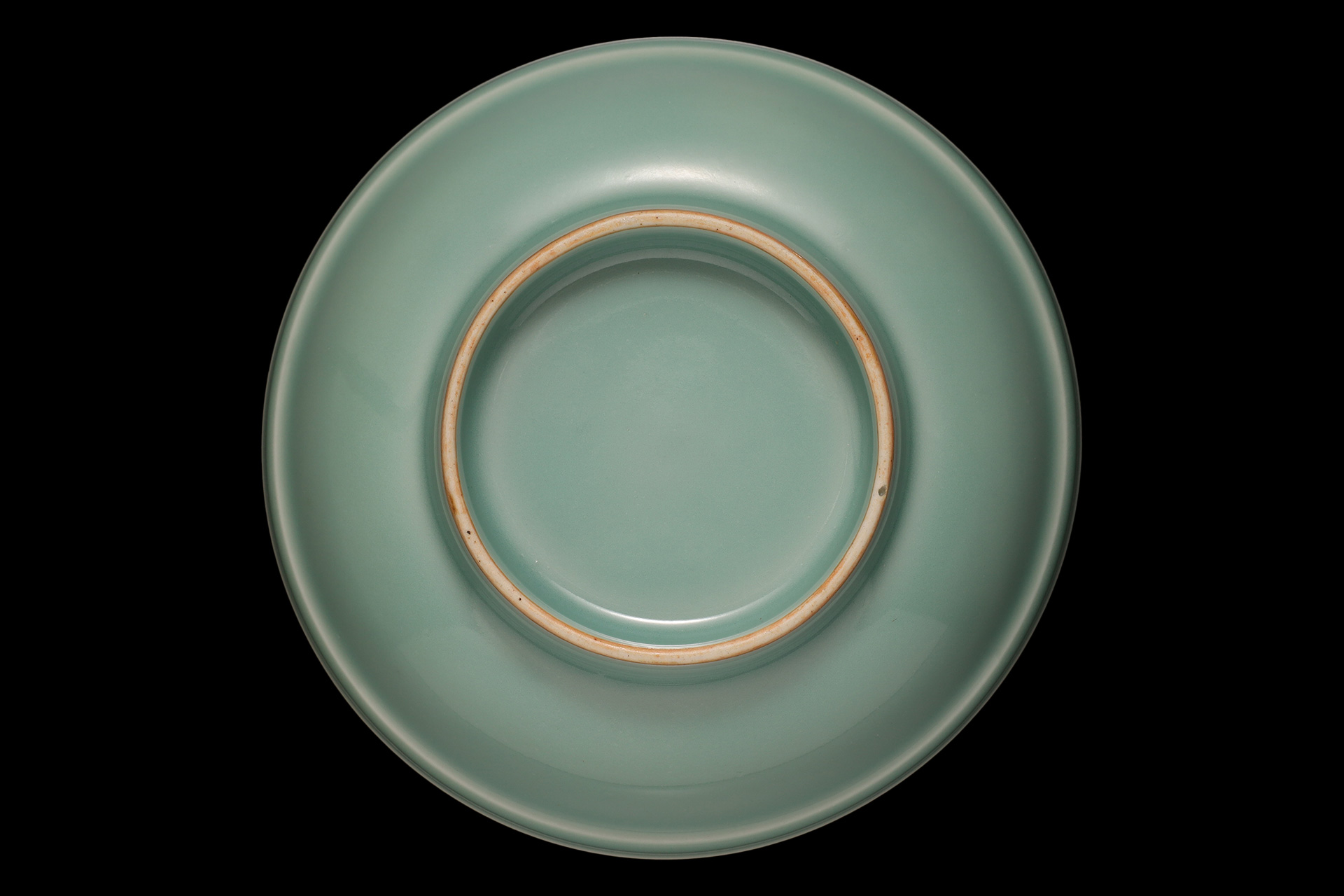
We sell and purchase Nabeshima Ware
We have a physical shop in Hakata-ku, Fukuoka City, where we sell and purchase "Nabeshima Ware" works. Drawing on a long career and rich experience in dealing, we promise to provide the finest service in the best interests of our customers. With the main goal of pleasing our customers, we will serve you with the utmost sincerity and responsibility until we close the deal.



